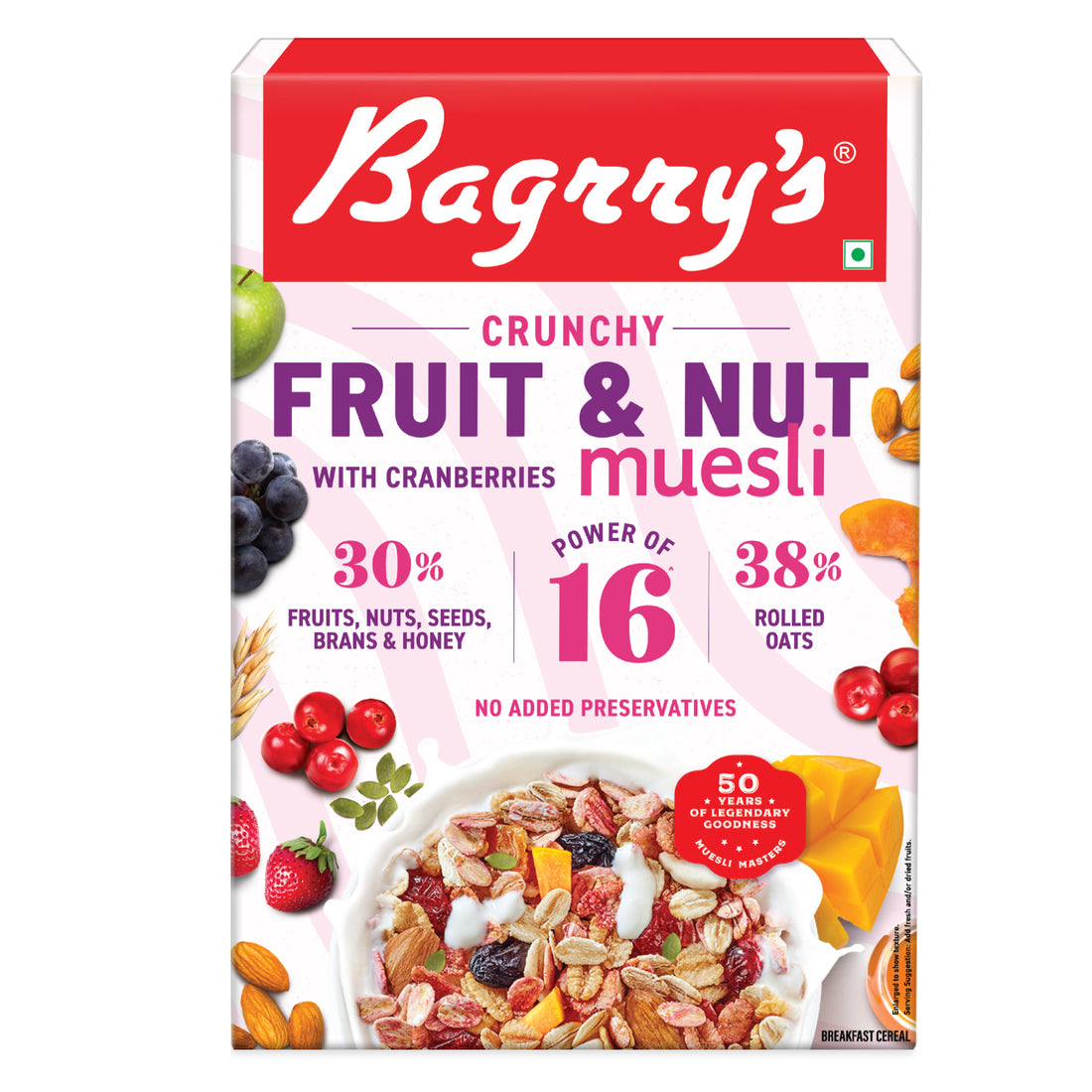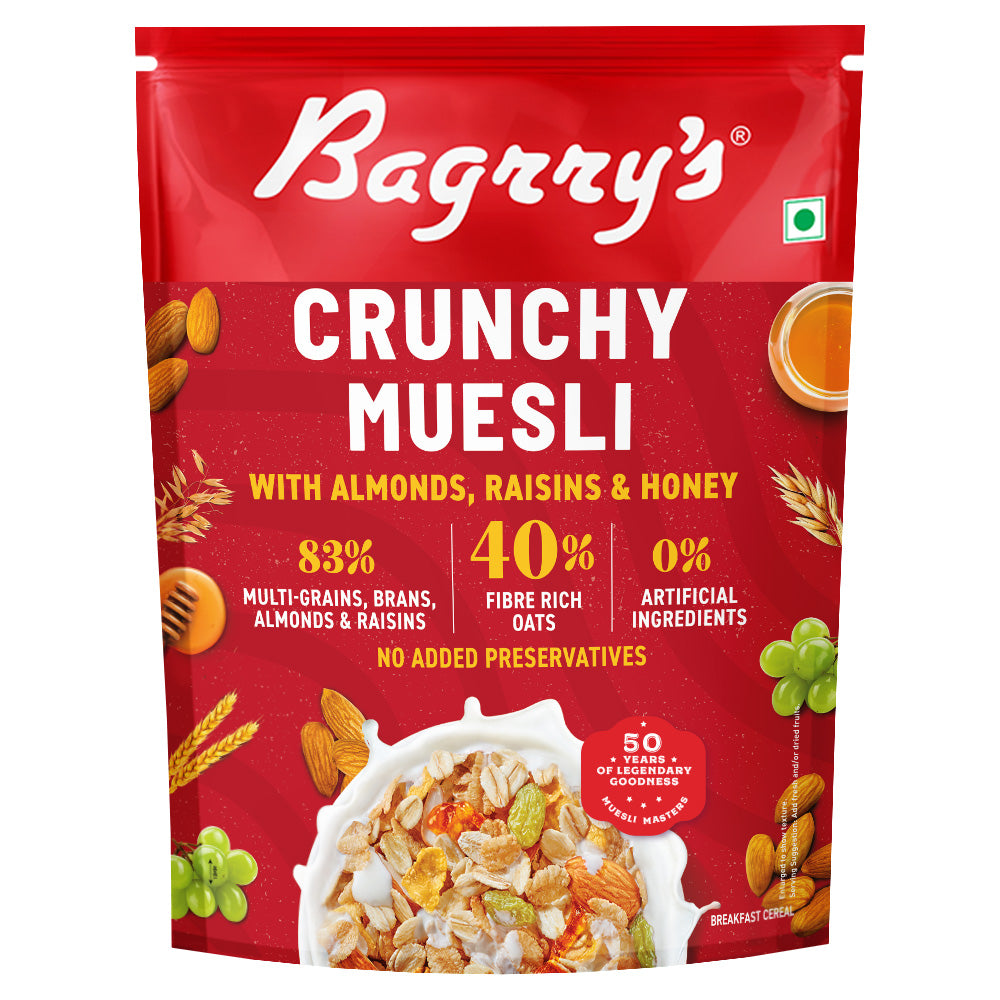Fibre, often regarded as the unsung hero of nutrition, it plays a crucial role in maintaining our overall health and wellness. Despite its importance, many people fall short of their daily fibre needs. Understanding the benefits of fibre and incorporating more of it into your diet can pave the way to better digestion, improved heart health and even effective weight management.
Why Fibre Matters?
Fibre is a type of carbohydrate that the body cannot digest. Unlike other carbs, it passes through our digestive system largely intact, supporting various physiological functions along the way. It acts as a prebiotic, feeding good gut bacteria, which produce beneficial short-chain fatty acids. There are two main types of fibre, each with unique benefits:
- Soluble Fibre: Dissolves in water and forms a gel-like substance in the gut. This type of fibre helps lower cholesterol and regulate blood sugar levels, making it beneficial for heart health. For example: Oats, have soluble fibre called Beta glucan.
- Insoluble Fibre: Does not dissolve in our Blood Stream and adds bulk to the stool, which aids in regular bowel movements and prevents constipation. For example: Whole wheat, nuts, and carrots.
Key Benefits of Fibre

Incorporating fibre into your diet can yield numerous health benefits:
- Improved Digestive Health: In soluble Fibre promotes bowel regularity, which can help prevent digestive issues like constipation, irritable bowel syndrome (IBS) and diverticulitis.
- Heart Health: Soluble fibre, in particular, can help reduce bad cholesterol (LDL) levels, supporting cardiovascular health. Research also suggests that a high-fibre diet may reduce blood pressure and inflammation.
- Weight Management: Fibre-rich foods tend to be more filling, providing satiety which can prevent overeating and support weight management goals.
- Blood Sugar Regulation: Fibre slows down the absorption of sugar, which helps prevent spikes in blood glucose levels. This is particularly beneficial for individuals managing diabetes.
Daily Fibre Recommendations
According to dietary guidelines (Source: US FDA), women should aim for about 25 grams of fibre per day, while men should target around 38 grams. However, most people fall short, consuming only about half of their recommended daily fibre intake.
In India, similar recommendations align with global standards, though specific guidelines can be cross-referenced with organisations like the National Institute of Nutrition (NIN).
Simple Ways to Increase Your Fibre Intake
Adding more fibre to your diet doesn’t have to be challenging. Here are some practical, tasty ways to up your fibre intake effortlessly.
-
Start with a High-Fibre Breakfast

-
Starting your day with a fibre-rich breakfast sets a healthy tone for the day. Try incorporating Bagrry's Crunchy Muesli, Fruit & Nut Muesli or No Added Sugar Muesli for a filling and nutritious option. These mueslis are packed with whole grains, nuts, seeds & fibre-rich fruits, making them a great choice to kick-start your morning.
 Whole grains contain all parts of the grain, including the fibre-rich bran. Products like Bagrry's Oat Atta and Bagrry’s Wheat Bran can be easily added to your meals. Swap refined flour with oat atta in your rotis or breads or cookies to increase fibre, or add wheat bran to smoothies or baked goods for a subtle boost, switch to porridge instead of Parata’s for a healthier breakfast or a mid-meal snack.
Whole grains contain all parts of the grain, including the fibre-rich bran. Products like Bagrry's Oat Atta and Bagrry’s Wheat Bran can be easily added to your meals. Swap refined flour with oat atta in your rotis or breads or cookies to increase fibre, or add wheat bran to smoothies or baked goods for a subtle boost, switch to porridge instead of Parata’s for a healthier breakfast or a mid-meal snack.
When hunger strikes, reach for snacks that are naturally high in fibre. Bagrry's 7-in-1 Superfood Trail Mix is an excellent choice, offering a mix of nuts, seeds, and dried fruits that not only satisfy your cravings but also provide a good amount of fibre.
- Add Fruits and Vegetables to Every Meal
Fruits and vegetables are rich in fibre, especially when eaten with their skin. Apples, carrots, berries and leafy greens are great options to add to salads, smoothies, or as a side dish. Try sprinkling Bagrry's Oat Bran over your salads or blending it into soups for an easy fibre boost without altering the taste.
- Experiment with Legumes and Lentils
Beans, chickpeas and lentils are excellent sources of both soluble and insoluble fibre. They can be added to soups, stews, and salads, or made into delicious spreads like hummus. Pairing these fibre-rich foods with whole-grain muesli or bran can enhance your intake and diversify your meals.
Tips for Adding Fibre Gradually
While it’s tempting to load up on fibre right away, sudden changes can lead to bloating and discomfort. Here are some tips to incorporate fibre smoothly into your diet:
- Increase Slowly: Add fibre-rich foods to your diet gradually over a few weeks to give your body time to adjust.
- Stay Hydrated: Fibre works best when there’s enough water in your system. Aim to drink at least eight glasses of water a day to keep things moving smoothly.
- Incorporate Variety: Different fibre sources offer unique benefits, so mix it up with whole grains, fruits, vegetables, and legumes.
Conclusion

Fibre is an essential component of a balanced diet with far-reaching health benefits. By making simple swaps and adding products like Bagrry's Muesli, Oats Atta, Wheat Bran and Trail Mix to your meals, you can enjoy a wide range of fibre-rich options that support your health goals. Embrace these small, sustainable changes in your meals to meet your daily fibre needs and experience the advantages that come with a fibre-rich diet.









